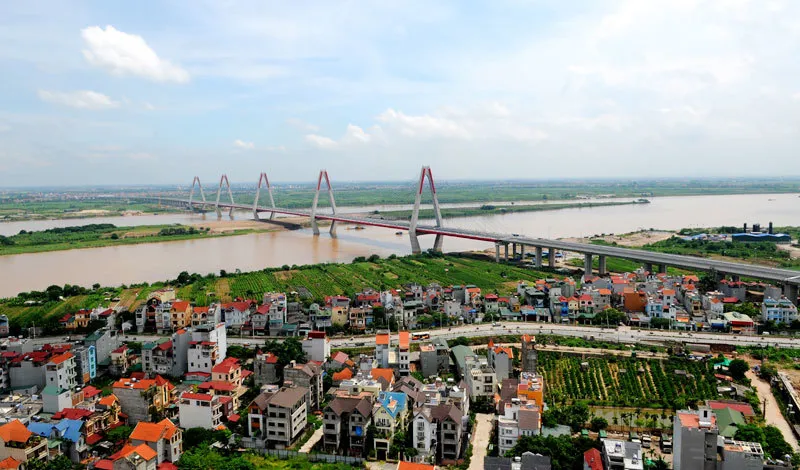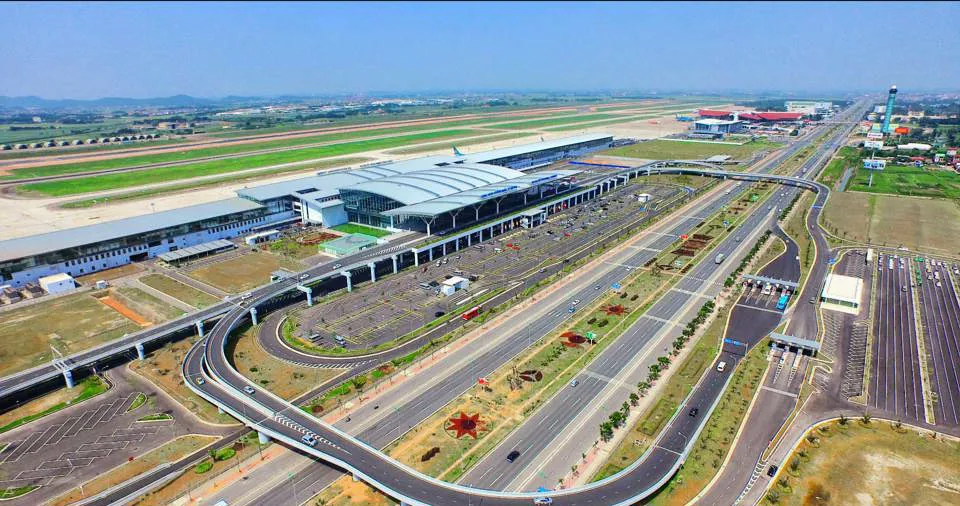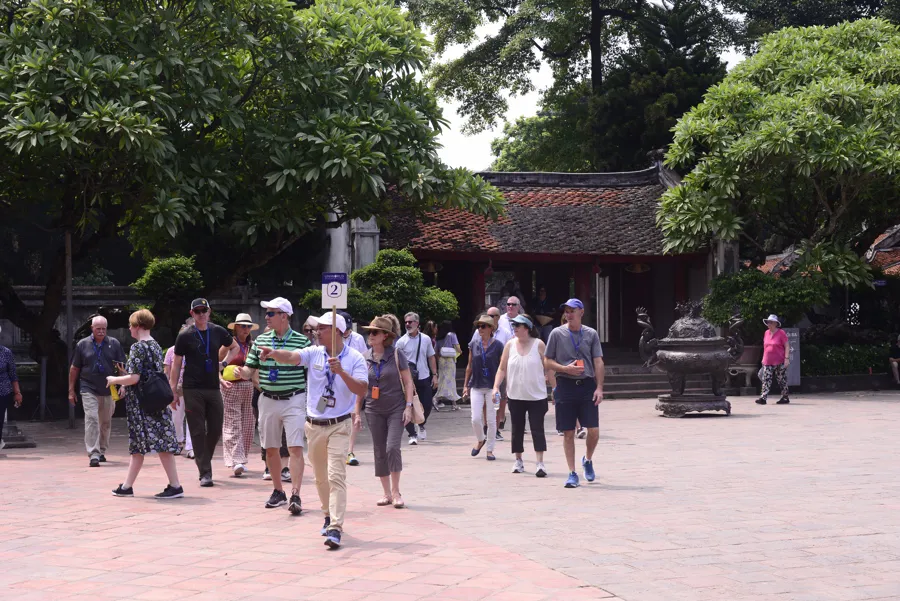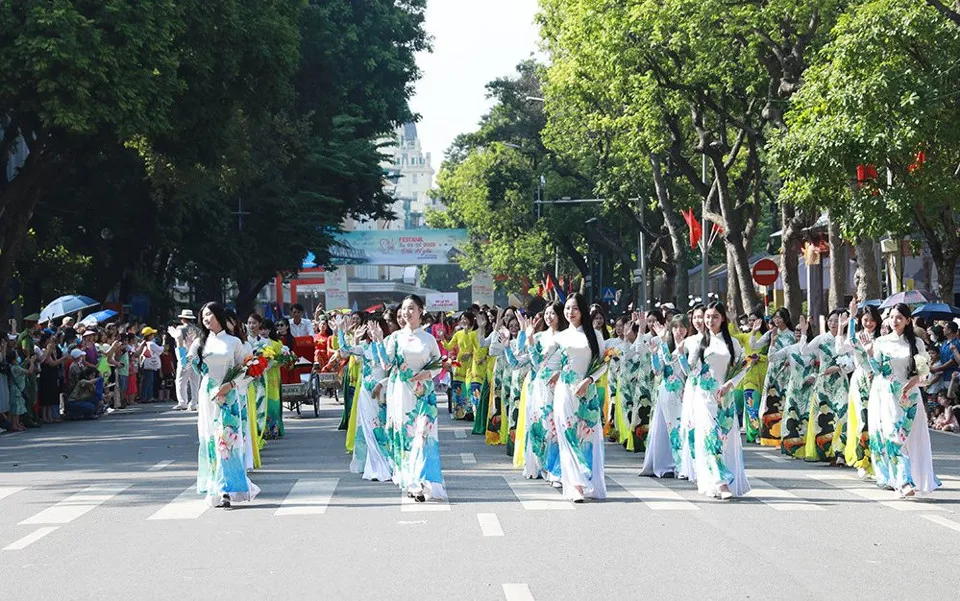Vietnam’s Politburo approves Hanoi’s master plans for overall development
Hanoi will prioritize metro lines and roads as the backbone for socio-economic enhancement.
The Politburo of the Communist Party of Vietnam has approved the two plans that will govern Hanoi's overall development in 2021-2065.
| The Cat Linh-Ha Dong metro line, the first of its kind in Hanoi. Photo: Hai Linh/The Hanoi Times |
According to the Conclusion 80-KL/TW released on April 24, the Politburo noted that the Party Committee and Hanoi authorities are taking strong steps in infrastructure development, aiming to complete 14 metro lines by 2035 by 2035 and build a network of ring roads, roads and bridges across the Red River to expand the space for socio-economic growth and better regional and international connectivity.
| The Nhat Tan Bridge crosses over the Red River. Photo: Thanh Hai/The Hanoi Times |
The Politburo concluded that Gia Lam and Hoa Lac airports should be studied for both military and civilian use. The Politburo urged Hanoi to be careful in choosing the location for the second airport, considering its impact on the development of the capital and other provinces and cities in the Red River Delta.
The Politburo also urged the capital to pay attention to diversifying public transportation to develop green transportation and improve the quality and efficiency of environmental protection, water supply, sewage treatment protection, and flood prevention.
Zoning of socio-economic development space should be structured the center-line pattern with corridors, economic belts, and development axes, associated with the effective mobilization and use of resources, regional linkage as well as connectivity among spaces of culture, digital and scientific space, technology, and innovation.
| Noi Bai International Airport in the Soc Son district of Hanoi. Photo courtesy of ACV |
Hanoi should work out road maps and policies to relocate factories and hospitals that do not conform to the planning; move universities, headquarters of agencies, and headquarters of large enterprises outside the metropolitan areas; have a plan to develop the north of the Red River; at the same time, carry out urban renovation and reconstruction.
Hanoi is requested to repurpose the headquarters of ministries, agencies, and large enterprises left vacant after relocation to build museums, especially the Vietnam Communist Party Museum at the Ba Dinh Political Center; cultural and creative spaces, public spaces, green parks, and others.
The Politburo also called on the capital to build green and ecological districts and expand the area of green spaces in both urban and suburban areas, especially in central districts. It also asked Hanoi to consider digital infrastructure as the foundation for the growth of the digital economy, digital society, and digital citizens, as these are the conditions that pave the way for Hanoi to make strong progress in the future.
Cultural industry
In addition to designing the urban landscape, the Politburo instructed Hanoi to focus on developing its cultural and entertainment industries to make tourism a driving economic factor.
| Foreign travelers visit the Temple of Literature in Hanoi. Photo: Pham Hung/The Hanoi Times |
Hanoi should preserve and explore the advantages of its cultural and historical destinations, combine them and make them great attractions for tourists, and build new facilities that can become the capital's modern and symbolic landmarks.
Specifically, the Red River should remain the main axis for Hanoi's growth and the backbone for the development of ecological, cultural, historical, and green spaces along its banks. There must be a policy to regulate land use along the riverbanks for socio-economic development, especially tourism and services.
| An ao dai performance on the streets of Hanoi. Photo: Cong Hung/The Hanoi Times |
In addition to reviewing and clearly defining Thang Long-Hanoi's functions, responsibilities, and positions throughout the city's more than one thousand years of history, Hanoi is asked to consider how best to utilize Hanoi's advantages, potentials, and special qualities for the capital's growth.
The capital should evaluate the precise constraints and shortcomings to clearly grasp the root causes of obstacles, so as to adopt inventive thinking, breakthrough ideas, and strategies related to the priority implementation roadmap.
The Politburo also stipulated that Hanoi's development plans must be in line with the resolution of the 13th National Congress of the Communist Party and other directives issued by the Party's Central Committee, Secretariat, and Politburo. They should not contradict or overlap with existing national, regional, and sectoral plans.
| A high-tech farm in Soc Son District. Photo: Pham Hung/The Hanoi Times |
The Politburo expects Hanoi to become a cultured, modern, and civilized metropolis based on scientific and technological advances, and to become the growth engine for the Red River Delta region, the North, and the whole country.
The capital should envision itself as an international financial and educational hub, growing on the basis of a green and circular economy, a digital economy, and a shared economy.
As the center of growth in the North, Hanoi aims to transform itself into a city with high-quality living conditions and comprehensive socio-economic growth by 2050. The plan aims to make Hanoi a global, green, smart, peaceful and prosperous metropolis that keeps pace with the growth of other cities in the region and the world.
| High-tech manufacturing at Hoa Lac Hi-Tech Park in Thach That District. Photo: Pham Hung/The Hanoi Times |
During 2021-2050, Hanoi will develop on the basis of five spaces, five economic corridors, five growth axes, five socio-economic regions, and five satellite cities.
Key tasks for city and local authorities include revitalizing rivers, accelerating the renovation of old tenement buildings, improving social security and safety, promoting historical and cultural values for tourism, and building new infrastructure to improve transportation and facilitate rapid socio-economic growth.



















